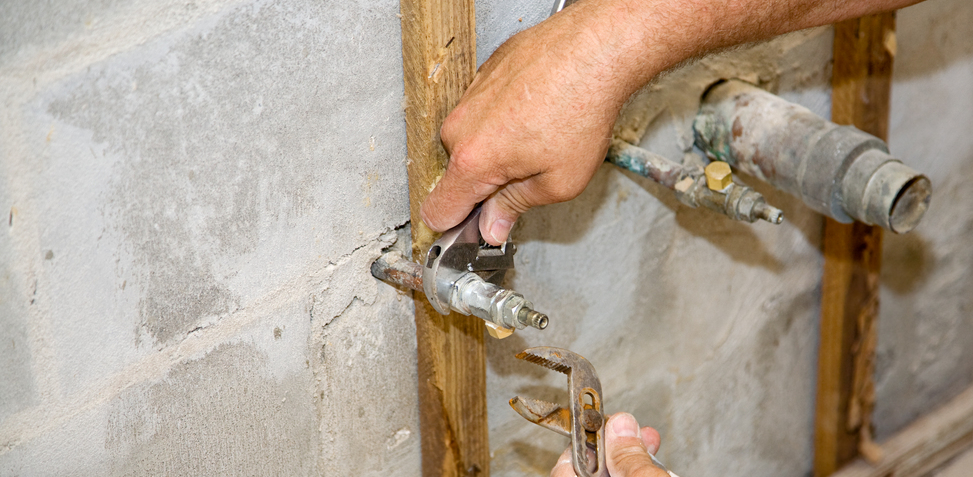How do you really feel when it comes to Common Plumbing Problems in Older Homes?

Older homes usually come with beauty, personality, and background, yet they can likewise bring a host of pipes issues. Whether you're taking care of aging pipes, low water stress, or leakages, knowing just how to resolve these common problems is vital to keeping a secure and functional home. In this overview, we'll discover the common pipes difficulties faced by older homes and provide sensible services to keep your plumbing in top form.
Recognizing Typical Pipes Problems
Aging Pipes
Among one of the most usual concerns in older homes is maturing pipelines. Depending on the period in which your home was constructed, the pipes may be made from products that have actually degraded over time, such as galvanized steel, cast iron, or perhaps lead. These materials can rust, end up being breakable, or develop leaks, causing water damages and possible carcinogen.
Water High Quality Screening
Older pipes can impact the high quality of your water. Conduct a water high quality test to look for impurities such as lead, rust, or various other contaminations that may be presented by maturing pipelines.
Solutions for Common Pipes Issues
Replacing Aging Pipelines
If your home has old, wearing away pipelines, consider changing them with modern-day materials like copper or PEX. This can be a substantial financial investment, but it will certainly avoid future issues and enhance the safety and reliability of your pipes system.
Dealing With Low Tide Pressure
To fix low water pressure, start by cleansing or replacing old fixtures and getting rid of mineral accumulation in the pipelines. If the problem lingers, it might be required to change sections of rusty pipelines.
Fixing and Replacing Leaking Pipes
For small leakages, you can make use of pipe clamps or epoxy putty as a short-term repair. However, it's best to replace leaking pipelines totally to stay clear of more damage.
Upgrading Components
Upgrading old fixtures to modern-day, water-efficient versions can improve your home's pipes efficiency and minimize water consumption. Seek components with the WaterSense tag for the very best performance.
Handling Pipe Deterioration
If your pipelines are corroded, changing them with corrosion-resistant products like copper, PVC, or PEX is the most effective option. Regular evaluations and water top quality maintenance can assist protect against additionally deterioration.
Low Tide Stress
If you're experiencing low tide pressure, it could be as a result of natural resources, deterioration inside the pipes, or old fixtures that are no longer working efficiently. This can be a major trouble, specifically in areas like showers and sinks.
Dripping Pipes
Leakages are another regular issue in older homes, usually caused by corroded or damaged pipelines. Also small leakages can result in considerable water damages, mold development, and increased water bills if not resolved without delay.
Out-of-date Components
Obsolete pipes components such as taps, toilets, and showerheads not just look old but might likewise be much less effective, vulnerable to leakages, or incompatible with modern-day plumbing requirements.
Pipe Corrosion
Corrosion is an usual trouble in older pipes, especially those made from galvanized steel or cast iron. Corroded pipelines can limit water circulation, create discoloration, and eventually bring about leakages or pipeline ruptureds.
Analyzing the Problem of Your Pipes
Evaluating Noticeable Pipelines
Begin by inspecting any kind of visible pipelines in your house, such as those in basements, crawl spaces, or under sinks. Look for indicators of rust, leakages, or corrosion, which can suggest underlying issues.
Checking for Leakages
Check for leakages by examining locations around taps, toilets, and under sinks. You can likewise check your water meter before and after a period of no water use to spot surprise leaks.
When to Call an Expert
While some pipes issues can be handled with do it yourself remedies, there are times when it's best to contact a professional. If you're handling significant leakages, extensive rust, or are unclear concerning the condition of your pipelines, an accredited plumbing technician can give skilled assessment and repair service.
Preventive Maintenance Tips
Routine Evaluations
Consistently inspect your pipes system for signs of damage. Capturing issues early can avoid costly fixings down the line.
Water Pressure Policy
Guarantee your water pressure is within the suggested variety to prevent worrying your pipelines and components. A plumbing technician can mount a stress regulator if required.
Water Quality Maintenance
Install water filters or softeners if your water quality is poor. This can protect your pipes and fixtures from damage triggered by difficult water or pollutants.
Positive Pipeline Substitute
If your home has very old pipes, take into consideration proactive substitute prior to significant problems emerge. This can save you from emergency fixings and water damage.
Final thought
Taking care of pipes problems in older homes calls for a mix of watchfulness, precautionary upkeep, and prompt upgrades. By comprehending the typical obstacles and knowing when to look for professional help, you can ensure your plumbing system stays practical and dependable for many years to find.
Common Plumbing Problems in Older Homes
Older homes have a ton of character from the antique brass faucets, clawfoot tubs, and colorful tile to the Dutch doors, transom windows, and archways, there s a lot to love. Unfortunately, that character often includes old plumbing that s past its prime and isn t fit to support modern appliances.
If you own an older home and are suspicious about strange noises (ghosts?), smells, leaks, or frequent clogs in your plumbing, it's possible that your home s old age is to blame.
Learn more about the most common old house plumbing problems, and what can be done to fix them!
What Are the Most Common Plumbing Problems in Old Houses?
Old, corroded piping. Most older pipes are made of material that corrodes and rusts more easily. Even if over the years some of that piping was replaced with better material, the rest may be damaged or repaired with lower-quality material. Though expensive, it may be the best option to re-pipe your plumbing especially if there s rust or lead in your water. Slow drains. This could be the result of many issues, but most likely because of pipe bellies. These are sags in your drainpipes that happen as your home settles and shifts downward over time, putting pressure on your pipes and creating negative slopes. This can restrict water from flowing correctly through them and result in slow drains. Frequent clogging. As you might expect, pipe bellies can also lead to frequent clogging. Another reason for clogging could be due to buildup over time, or blockages from sediment and root growth. Scheduling a drain inspection and drain unclogging service can eliminate this issue. Damaged or failing sewer lines. Old homes are more likely to have foundational shifts and tree root overgrowth. This can put a lot of pressure on and in your sewer lines, leading to damage. Another common reason for failed sewer lines is because of modern appliance upgrades. Newer appliances put more strain on sewer lines, and if your old pipes aren t equipped to handle this, it can result in damage. If you have any wastewater backup, slow drains, or soft spots in your yard, you may need sewer line replacement. Worn or outdated fixtures. Plumbing fixtures old or new aren t built to last forever. Even if your fixtures seem like they re working well, it s best to check the wear on any internal parts. Minor wear and tear over time can lead to more costly leaks and plumbing issues. Our experts can perform a plumbing inspection for any part of your home s plumbing. Improper installations or repairs. Whether your plumbing was installed a hundred years ago, installed incorrectly, repaired incorrectly, or repaired with outdated materials, this can affect the long-term stability of your plumbing. In older homes especially, having your plumbing inspected is vital to preventing damage. What Are Old Plumbing Pipes Made Of?
Galvanized steel. Most often used between the 1930s and the 1980s, this piping material was discovered later in the 1990s to be prone to rust and corrosion, releasing lead into the water, which is dangerous to consume. Copper. Most homes built around the 1960s are likely to have copper piping. Unlike galvanized steel, copper is one of the most durable materials for plumbing pipes. The issue with this material is the risk of lead, which could be present in the piping itself or the solder applied to the joints and fittings. PVC. This material is still used today and was often used in older homes where piping was replaced because it was easy and inexpensive to install. PVC is also very durable, lead-free, resistant to rust and corrosion, and handles high water pressure well. The downside is that hot water can make it warp. How to Fix Plumbing Problems in Old Homes
Have your plumbing inspected. Before you begin or schedule any type of repair, schedule a plumbing inspection. An expert will be able to properly identify all the issues in your plumbing and the best solution to avoid further damage. Get your plumbing repaired or replaced as needed. Depending on the issues found with your plumbing, you may need minor repairs or larger replacements. Make sure these issues are addressed before you tackle any smaller issues. Remove any clogs or buildup. It s likely your old pipes are clogged with debris, mineral buildup, hair, tree roots, and more. Having your drainpipes cleaned will improve overall drainage and help prevent future leaks. Replace old fixtures. Before replacing any fixtures, check with your local plumber first. Not only can new fixtures strain your old plumbing pipes, but installing them incorrectly can lead to costly damage.

Hopefully you enjoyed our section about Plumbing Issues in Older Properties and How to Fix Them. Thanks a ton for spending some time to browse our post. Are you aware of another person who is fascinated about the niche? Take a moment to share it. We thank you for your readership.
Visit Link